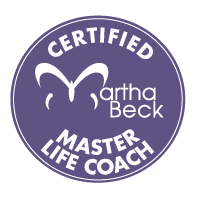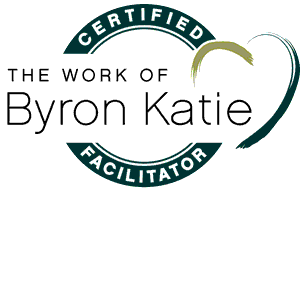Evacuation & Return

Six weeks ago I spent a quiet weekend at our Cascade cabin, and the first smoke of the overwhelming fire season to come caught my attention. Like the animal that I am, I began to scan my surroundings with the focus that a whiff of danger brings. Instantly I was aware of what was at stake, something I’ve taken for granted for the thirty five years that I’ve visited this old growth forest. I looked up, as if for the first time, and I silently jotted a few words in my journal.
Who are these enormous beings I’ve categorically referred to as trees? I look up. Up. Up. 12 stories up are their heads. Western red cedar, grand fir, yew, mtn. hemlock, chinquapin, from babies to snag-headed old ones. They haven’t moved anywhere all this time, steady. Where have I been until this moment to have missed them?
I went home to the suburban oak savannah where I usually live. The smoke followed. I thought often of the trees in the forest around the cabin and sent a prayer. Then I came across this poem:
Lost
Stand still. The trees ahead and bushes beside you
Are not lost. Wherever you are is called Here,
And you must treat it as a powerful stranger,
Must ask permission to know it and be known.
The forest breathes. Listen. It answers,
I have made this place around you.
If you leave it, you may come back again, saying Here.
No two trees are the same to Raven.
No two branches are the same to Wren.
If what a tree or a bush does is lost on you,
You are surely lost. Stand still. The forest knows
Where you are. You must let it find you.— David Wagoner (1999)
The next month took a certain rhythm. Fire reports every morning. Stair-stepping through the levels of evacuation as the fire approached, less than a mile away. After a while, the cabin didn’t matter any more. I just missed the trees. I imagined them turned to charcoal.
At the end, in a neck-and-neck race between the fires and the rains, the rains came, for five straight days. Just a couple of days ago we got word we can go back. My own particular trees survived. And now, as I prepare to return, it’s to a new landscape. Even though the surrounding forest hasn’t physically changed, I have.
I re-read the poem I stand still, at home with the oak trees, seeing this grove for the first time, each individual tree. Here. They were surrounding me all along, making a place while I worried about the forest in the mountains. And when I do return to the ancient forest, I will pay attention to the breath of the forest, to the answering that says “Here.” And I will listen.
Wonder Woman Meets Wondering Woman: Summer of Wonder

I was never Diana Prince, exactly, with her random collection of skills and her athletic-yet-flirty costumes. But she was my main goddess when I studied and taught archetypal psychology during my middle-ish years, as a young, energetic woman with a mission of upholding peace and justice while raising a the next generation with an even hand, healthy nutritious food, solid values, and all other things good and true. Revisiting her in film form this summer was much more thrilling and significantly less exhausting.
Long before the concept of “online retail” was born, Amazons inhabited a room in the mind for women so committed to their own skills with bow and arrow that they wouldn’t let a breast (or two) get in the way. It was that time of life, that state of mind. I needed every bit of that sassy fighting spirit to cut through the complexities and obstacles of my life. Artemis is still a part of me, ready with her quiver and bow when I need to write a letter or make a phone call. No matter what’s going on in the world around me, I too put my faith and energy into the power of love over hate, a story plot acted (and acted out) many times daily on the world stage.
Artemis stepped up recently to plan and prepare and hunt and gather the resources before the total solar eclipse in my neighborhood. She awoke early the morning of the event, to check out the newest world situation, and to put together the food and gear for visiting friends and family. Just the way she has helped me manage life so many times before. But then another Shero took over. I’m calling her Wondering Woman, and Her superpower is (you guessed it) a sense of wonder. Just before the day got rolling, she whispered that it was time to step back from the fray and listen.
Watching the glowing new honeylight where I have awakened to the meadow in my own little orbit of friends, family, community for the last 40 years. Dove calls across the way to listen. Knowing the sun will soon be nearly erased by the moon, I’m trying to understand what that might mean, even astronomically, but my mind can’t hold it. Anticipation in wind. Cars speeding by to find the right spot in a couple of hours now. Three. Two. One. Breath filling body, staying in the miracle of this infinity. Inside and Out. Moving deeper and deeper into wonder. They say this and that about experiencing totality. Anticipation rides the air currents. I wonder. I’m open. I’m watching. I’m wondering.
Wondering Woman has stayed with me ever since. After the experience of “totality,” like millions of others stopped in my tracks by Something, I’m still wordless and deeply curious about the power of the concentrated absorption of so many humans, waiting together in a deep communion with the Unknown. I stand in wonder at the power of millions of us willing to be struck with awe by something infinitely bigger than our usual frame of reality. We were united by a collective openness to the irrefutably bigger picture. For a few minutes there, as the unimaginable happened and the daylight world was lit by a mere glimmering parabola, I found my tribe, the Wonderers. And we are amazing. Amazed.
And so in this time of my life I’m bowing to my new archetypal heroine, Wondering Woman. She’s a mature Pandora, this one (and I am not referring to the online music distribution site). She’s a Wise Elder-Goddess, one who holds space for the invisible, who bridges the inner and outer worlds with skillful attention and vast curiosity. She’s the Goddess of open and curious mind and heart.
Woman of Wonder. The sequel. I’m curious. Welcome to the tribe.
Photo thanks to my friend David Paul Bayles and the miracle of photography
The Path of Totality: Where Sun Meets Fire

Eclipse Fever collides with Wildfire in my environmental newsfeed this month. In only ten days, my abnormally “normal” town will become a swollen version of itself. As the planetary wheel turns, we’re one of the very first and most reliable viewing places for the total eclipse, given that the Oregon Coast has a foggy and questionable personal history. Frankly, we see it as the most charming place from which to watch, bar none. But just how charming is something we try to keep very quiet. Notice I’m not being very specific or dropping its name.
The jig is up already up, though. Most of us with empty rooms in our homes have long had them booked with long-lost family or friends. The Willamette Valley floor is sprouting campgrounds in abundance, at $200 to $750 per site. We’re stocking up as if a snowfall were imminent, aware that our town will likely double or triple or quadruple in size. We’re also tuning up bikes so we can stay on the bike paths and out of traffic snarls, the ones that we’ve we’ve been warned about since April.
This will be the second total eclipse I’ve witnessed. The first one was in 1979. As I was recently reading the mystical accounts of eclipse stalkers, I reached back to remember…very little. Popular culture seemed far less interested in things celestial back then. The path of that total eclipse was a Nike-shaped swath over Washington and up into Canada so there was almost no Eclipse Hoopla. My husband and I and baby Ben simply drove the night beforehand a couple hundred miles to the rolling hills of southern Washington and parked our VW van on a wide spot in the road. Across the gentle hills a smaller version of Stonehenge was visible. Despite the dramatic location, there were only a few of other cars in the nearby parking lot. The sun was just up, and it was a showery February. The sun did break through the clouds to cast shadows over the hills as it chased a sweeping line of darkness. In my mind now it’s another subtle and rich life moment, thanks to my somewhat intact memory and a beautiful painting by my friend Jan that still hangs over my bed.
Meanwhile, right now, there’s another more pressing emergency situation in my other summer world, one that could (literally) eclipse the actual eclipse. Across the valley and up in the mountains lies our summer cabin, also in the path of eclipse totality. A wildfire has been burning on the shoulder of nearby Mt. Jefferson, and it’s only a couple of watersheds away. At risk are the old growth forests that are such a global treasure. Lately it’s been growing some days and sitting relatively still others, and there’s a staff of over 200 professionals on the case. Ironically, when the smoke is thick enough, the fire slows down, since it feeds on the heat generated by the powerful summer high-altitude sun, among other things. This whole area will thankfully be closed to Eclipse watchers because of the serious increased risk of fires.
The preparedness required here is a little more complicated than stocking our Valley home with beer and barbecue supplies. We’re clearing out brush to make the area less hospitable (my interpretation of the official fire containment plan). Unlike the solar variety, this crisis won’t likely be all over in a week. For that we’ll need to wait until the rains come in late October.
We’re fortunate to be able to soothe sore muscles at the hot springs retreat center down the road, where my husband is a big support of the BFD, or the Breitenbush Fire Department. We hear that the risk of the fire reaching here is miniscule now. We return back to the valley, a hundred miles away. The winds have blown the smoke from the Whitewater fire in the mountain to settle right outside our window. Sunsets here are rubber ball red. There’s little chance that the eclipse will actually be eclipsed by smoke here, but there’s a sizable risk of other fires, what with all the increased human activity.
So much for Oregon laid-back summers. Living so close to the awesome power of the sun brings a sense of aliveness here in the path of totality. We plan ahead to care for our visitors and our residents, in and out of the forest. We work prudently to protect the lives around us. We live in the traveling light shadow of not knowing what the future will bring, even as we savor the summer breezes. It’s an incandescent time. There’s a totality, a presence, to it all.
I want to remember this, I think, when I start believing that life is dull or boring. This sense of being fully engaged and awake, of being “all in.” Perhaps this is the real awe-inspiring nature of the eclipse, or of wildfire. For the moment all the murmurings and distractions of our daily lives cease and we can see the magic inside the enormous power of nature, so far from our actual ability to control it.
Only totally.
Managing the Moving Target of Summer

I’ve been taken captive by the sheer beauty and the energy of the first true days of summer. It’s a season of wonder, this short and brilliant burst of color and light after an unusually dark and wet winter. Farmer’s Markets thronged by pale people baring themselves to sun, to heat. The scent of promise in the air as festivals and fairs bloom. Mountains Rainier, Hood, Jefferson, Shasta on their thrones, reigning over it all.
Summer here is a quickly moving target, reliably launched in mid-July and lasting for a couple of months. With an urgency driven by my mother’s recent death, I delight in the good fortune of having the energy to experience so much of this Life Force. I move through forests, mountains, and beaches here in “God’s country,” trying my best to savor every little drop out of the season. But the more I revel in the beauty and activity around me, the more I move, the more I long for the the still center of an actual target.
Each year I set my sights on my birthday, smack dab in the middle of the season. For most of my life it’s been a perfect day to gather with friends to celebrate with sour cherry pie or peach ice cream, a time to cram it full of love and gatherings. I’ve celebrated at fairs and festivals, from the Oregon Country Fair to Bastille Day. It’s been a big pay-back for the times in my childhood when I missed celebrating with my schoolmates because of my summer birthday.
But about twenty years ago I decided to declare a day (or week) right around July 15 as a time for personal retreat. It was counterintuitive, but I was desperate to land somewhere. Since then, this date has become a still point right in the center of all the goings on, a quiet place where I can gather the fragmented parts of myself, where I can see the silver and pearls that I carry inside myself, those parts which often go unheard and unattended. I spread them out on the carpet of time, slow it all down, and listen.
That first year I heard a name change as I immersed myself in a tide pool: Susan Grace. I listened. I changed my name to two names, just to be reminded of what’s truly at the center of the target. Not me. Not Susan, with all her personality and accomplishments. Grace. Which does not belong to me. This has come to mean a deep trust in the greater Mystery, in the stillness in the center of movement.
When I remember this, when I honor this, the target stops moving. There is the still center. This is what is true. And so, once again this year I gather the fragments of self and stand for a few minutes in the stillness. And this life makes a deeper kind of sense.
And you, Dear Reader. How can you find stillness in the center in the midst of all the moving parts that summer offers? You don’t need a birthday to declare a time out, whether it’s for a day or for a few minutes daily. Whether you go big with a silent retreat or small with daily meditation, it’s time to slow the target down and find the center, in the bullseye hidden in stillness.

